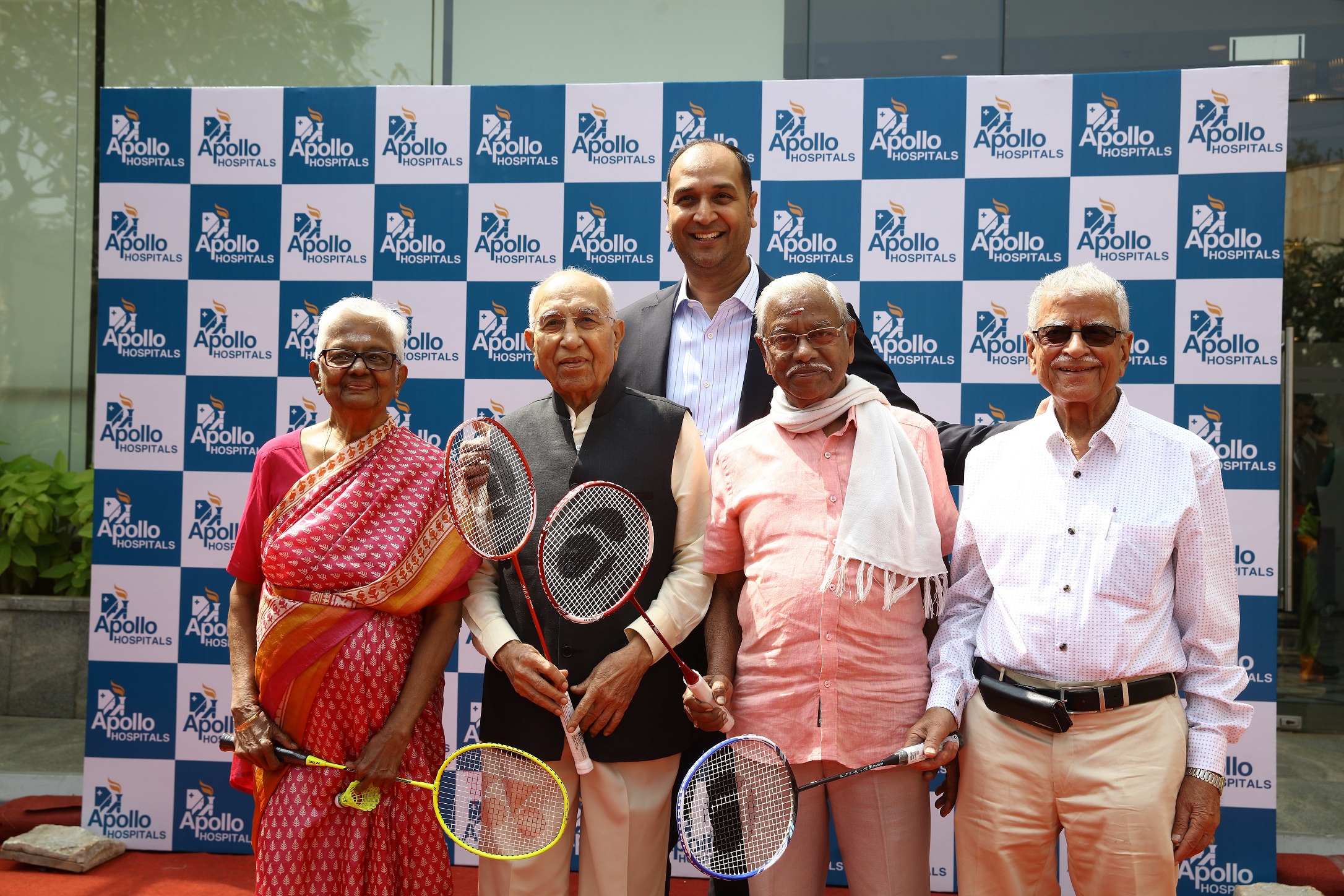 Trans-Catheter Therapies at Apollo Hospitals, Redefines Lives After 80
Trans-Catheter Therapies at Apollo Hospitals, Redefines Lives After 80
Chennai: New minimally invasive therapies in cardiovascular disease management couldn’t have come sooner. Heart disease is now the leading killer of men and women in the country. According to a study published by the Lancet, cardiovascular disease caused more than 2.1 million deaths in India in 2015. Even though that’s over a quarter of all deaths in the country that year, I still feel it’s an under estimation. Thankfully, these rapid changes in the healthcare landscape have led to improved outcomes for patients. These include therapies to address complex coronary lesions and valve disorders in people who have been deemed unfit for surgery due to various factors, including age, previous surgeries & high risks of complications. Until now these patients had a very poor quality of life with very high mortality rates. Here are three non-surgical cardiovascular therapies that are changing how cardiac patients live today.
MitraClip: India’s First Experience
Background
Skyrocketing incidence of hypertension, obesity and diabetes coupled with increasing life expectancy, all contribute to the staggering prevalence of about 4.6 million patients with heart failure in India.Of the 4.6 million patients suffering from heart failure,
- 30% die in hospital
- 44% of them are readmitted within 6 months of discharge
These heart failure patients have a miserable quality of life with an extremely high mortality of 50% in 5 years. Until now there was little we could do to alter these numbers, however with the dawning era of non-surgical alternatives, a wide variety of these cases can be safely treated with excellent results. Mitral regurgitation is a condition in which the heart’s mitral valve leaflets do not close tightly. As a result, with every beat blood flows backward inside the heart instead of just going forward. The heart must then work harder to push all this left over blood out to the body, which can cause fatigue, shortness of breath and finally heart failure. The MitraClip has come as a blessing to heart failure patients and simply repairs the mitral valve by clipping its leaflets together. This too is done in a cardiac Cath Lab via a vein in the leg. The recovery is dramatic with the patients feeling better the very next day. It has been used in over 70,000 patients from across the world till date, improving outcomes, and lowering hospitalizations and most important of all restoring their normal quality of life.
The COAPT study conducted on patients of Heart Failure with Functional Mitral regurgitation demonstrated a statistically significant reduction of 47% in the annualized rate of all heart failure hospitalizations through 24 months in those patients who underwent MitraClip therapy. The study also demonstrated a statistically significant mortality benefit with a 38% reduction in the all-cause mortality rate v/s Medical therapy alone. In addition to the reductions in hospitalizations and mortality, the patients who received MitraClip also had significant improvements in quality-of-life measures and functional capacity demonstrated by exercise capacity, symptom score improvement and delay in disease progression. This new data is very reassuring and this therapy will soon become the standard of care for patients of heart failure with moderate-to-severe or severe secondary mitral regurgitation who are not improving on medical treatment and also for those who have failed to respond to Cardiac Resynchronization Therapy (CRT).
- Dr. Sai Satish was instrumental in accrediting Apollo Chennai as one of only 4 centers across the subcontinent to perform this therapy. This strict quality control is imposed because of the highly demanding nature of the procedure.
- Between 26th & 28th of November, 3 cases were done for the first time in India, 2 in Delhi and one by him at Chennai Apollo. It was India’s maiden run and ours was the oldest patient @ 86.
Transcatheter Aortic Valve Replacement (TAVR) or Transcatheter Aortic Valve Implantation (TAVI): for Aortic Stenosis
Prevalence of aortic stenosis increases sharply with age and is expected to have a significant impact on the geriatric health care system of India, given the rapid increase in life expectancy in recent years.
- More than a million cases of Aortic stenosis are diagnosed per year in India alone
- It is estimated to affect 1 in 8 people over the age of 75
- And has a higher mortality rate than most cancers, once severe aortic stenosis is diagnosed, patients have an astounding mortality of 90% in 4 years if left untreated.
Transcatheter Aortic Valve Replacement (TAVR) or sometimes called Transcatheter Aortic Valve Implantation (TAVI) is a minimally invasive procedure to replace the aortic valve. In this procedure a thin, flexible tube housing the new collapsed valve is inserted most commonly through the femoral artery and delivered to the heart, replacing the old diseased valve. Similar to coronary angioplasty, the entire procedure is performed in a cardiac Cath Lab most often under just sedation and local anaesthesia and the patients sent home in under 5 days. Over the past 2 years a vast variety of cases have been treated very successfully with TAVI with excellent results. Ninety-year olds with severely calcified valves, congenitally bicuspid aortic valves with very high gradients, Rheumatic native aortic valves with metallic mitral valves already in place, in surgical aortic valves that have failed and even patients with pure aortic regurgitation are just some examples.
Initially only approved for those with prohibitive risk for open heart surgery, the inoperable cases, the US FDA rapidly realised its potential to save lives and has approved the procedure for the intermediate risk patients as well. Several studies are now underway evaluating this procedure in low risk and younger patients as well.
Rotablation:
With time the blockages in our arteries gather calcium and harden like bone. These blockages are extremely resilient to conventional means of treatment as balloons are just not strong enough to break them. A rotablator is a small drill (that rotates at 200,000 times/min) with a burr on the end coated in diamond dust. The rotablator is small enough to fit in an artery and strong enough to drill through the calcified blocks. As the rotablator breaks up the blockage, it grinds it into tiny pieces that can be safely carried away by the bloodstream thereby restoring blood flow. These exciting developments are already saving lives today, as we use them routinely in our practice and with time will most likely translate into lower cost procedures and better outcomes for patients in India, especially in geriatric healthcare.



